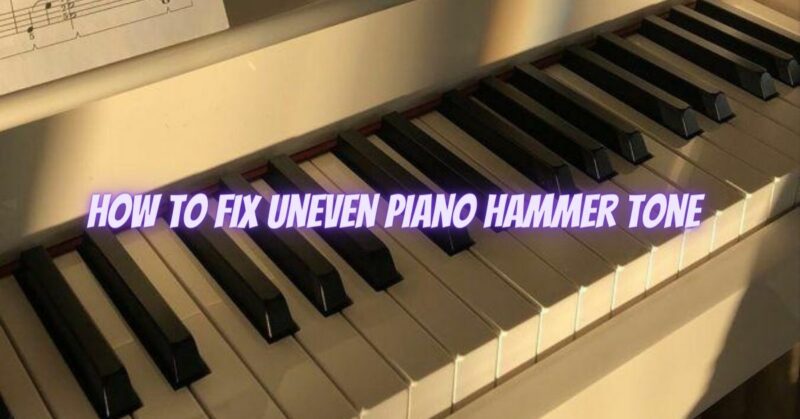An uneven piano hammer tone can be a frustrating issue for pianists and listeners alike. When some notes sound brighter or louder than others, it disrupts the harmony and musicality of your playing. However, with proper diagnosis and careful adjustments, you can restore balance to your piano’s sound. In this article, we’ll explore steps to fix uneven piano hammer tone and achieve a more consistent and pleasing sound.
- Assess the Unevenness: Start by playing each note across the entire keyboard and carefully listen for any discrepancies in tone. Pay attention to notes that sound noticeably brighter, louder, or softer than the rest. Identifying the specific areas of unevenness will guide your adjustments.
- Voicing Techniques: Voicing is the process of adjusting the density and hardness of the piano hammers to achieve a consistent tone. For notes with a brighter tone, use a voicing needle to gently soften the hammer felt. Conversely, for notes with a softer tone, you can slightly harden the hammer felt using fine sandpaper. Voicing requires skill and experience, so consider seeking assistance from a qualified piano technician for best results.
- Regulate the Piano Action: Proper regulation of the piano action ensures that each hammer strikes the strings consistently. Adjusting the key dip, let-off, and other action parameters can help achieve an even response across all keys. Regulation is a complex process that requires knowledge and expertise, so it’s advisable to hire a professional piano technician to handle this task.
- Address Worn or Misaligned Hammers: Over time, piano hammers can wear out or become misaligned, leading to uneven tone production. If you notice extensive wear or hammer misalignment, consult a piano technician to assess the hammers’ condition and recommend suitable repairs or replacements.
- Maintain Environmental Conditions: Changes in humidity and temperature can impact the felt covering on piano hammers, affecting their density and tone. Keep your piano in a stable environment with controlled humidity levels to minimize the impact of environmental factors on the hammers and overall sound quality.
- Schedule Regular Maintenance: Regular piano maintenance, including tuning, voicing, and regulation, is essential for achieving and maintaining balanced tone. Schedule regular visits from a qualified piano technician to keep your instrument in optimal condition.
- Be Patient: Achieving a well-balanced and even tone may take time, especially if extensive voicing or repairs are required. Be patient and allow the piano to settle after any adjustments. The final results will be well worth the effort.
Conclusion: Fixing uneven piano hammer tone requires a combination of technical knowledge, skills, and experience. While minor adjustments can be made by pianists, significant repairs and voicing should be handled by a qualified piano technician. With professional guidance and regular maintenance, your piano can be restored to its full potential, delivering a harmonious and delightful musical experience for years to come.


